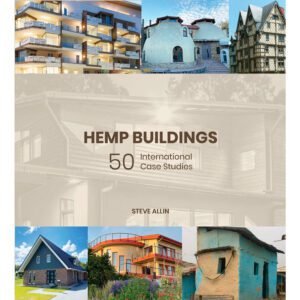Make or break your hemp business:
Maximize your profits with the perfect seed size
Dr Omid Ansari – HempGenTech
The global hemp market is on the rise, with an expected CAGR of over 20% over the next five years. This growth can be attributed to several factors, including the legalization of industrial hemp in many countries and the increased use of hemp seed and oil in food products. The versatility of hemp extends beyond food products, as its fibres can be used in the textile industry due to their strength, durability, and anti-bacterial and anti-fungal properties. Hemp has been a historically significant crop for centuries, with evidence of its cultivation dating back to ancient China. However, it was only recently that hemp’s potential was fully recognised, leading to its legalisation in many countries for food application. The versatility of hemp has led to its adoption in a wide range of industries, including food, textiles, construction, and more recently bioplastics.
One significant factor driving the growth of the global hemp market is the increased use of hemp seed and oil in food products. Hemp seeds are high in protein, fibre, and healthy fats, making them a popular choice among health- conscious consumers. Additionally, hemp seed oil is rich in omega-3 and omega-6 fatty acids, which have been linked to various health benefits.
The textile industry has also begun to recognise the innovative benefits of hemp fibres. Hemp fibres are incredibly durable, making them an ideal choice for products that require strength. Additionally, hemp fibres are naturally anti- bacterial and anti-fungal, making them a great choice for products that need to resist odours and stains.
The potential of hemp extends beyond its use in food and textiles. Hemp fibres can also be used in construction, as they are lightweight and possess excellent insulation properties. Furthermore, hemp can be used to create bioplastics, which are biodegradable and offer a more sustainable alternative to traditional plastics.
To fully secure the benefits of hemp cultivation, growers need to carefully consider various factors such as variety, and quality. Selecting the right hemp variety based on seed size can have significant financial implications for both the farmer and the industry. Larger hemp seeds are generally preferred for grain production, as they are easier to use in manufacturing facilities. Additionally, larger seeds have been shown to have a higher energy reserve, which is necessary for the successful establishment of the plant. This could result in higher yields and potentially greater financial returns for farmers.
Moreover, selecting a high-quality seed variety can further enhance the financial benefits of hemp cultivation. High-quality hemp seeds have higher germination rates, better vigour, and improved resistance to pests and diseases, resulting in a more robust and productive crop. With the increasing demand for hemp products, farmers need to ensure they are using the best available seed varieties to maximise their profits and meet market demand.
Hemp cropping presents a promising opportunity for farmers and the wider industry. However, success in this sector requires careful consideration of various factors, including the selection of the right variety and quality. By selecting the right hemp seed variety based on seed size and quality, farmers can maximise their financial returns and meet the growing demand for hemp products.
In this article, we look at the effect of seed size on the profitability of hemp crops. We aim to provide insights into the relationship between seed size and the success of hemp seed germination and establish the optimal seed size for hemp crop production. This article will help farmers and growers select hemp seeds of appropriate size, leading to better plant establishment and higher yields.
Challenges and Opportunities
Grain production for food applications
In Australia, the demand for hemp grains and oil has been steadily increasing, with more companies exploring the use of hemp in food products and as a source of protein in animal feed. The Australian government legalised the consumption and sale of low-THC hemp for food in 2017, which has opened new opportunities for the hemp industry. However, there are still some challenges facing the industry, such as the stigma against hemp and cannabis and the limited availability of planting seeds. To meet the growing demand for hemp globally and in Australia, a significant amount of planting seeds would be required. According to HGT estimates, planting 5,000 hectares of hemp would require approximately 150 tonnes of planting seeds. With the global demand for hemp projected to continue growing, it is important for the industry to address these challenges to fully capitalise on the economic opportunities that hemp offers.
Furthermore, as the demand for plant-based protein continues to grow worldwide and in Australia, hemp is emerging as a popular source due to its high nutritional value and versatility. According to a report, the plant-based protein market in Australia is expected to grow at a CAGR of 7.3% from 2021 to 2031, driven by the increasing trend towards vegan and vegetarian diets, rising health consciousness among consumers, and growing concerns over animal welfare. To meet the growing demand for hemp as a source of plant- based protein, it is essential to ensure an adequate supply of planting seeds. Based on an average grain yield of 800 to 2000kg per hectare and a planting density of 35kg per hectare, it can be estimated that around 23,000 to 58,000 hectares of hemp seed need to be planted in Australia to meet the demand for plant-based protein. However, it is important to note that this estimate is subject to various factors, such as weather conditions, soil quality, competition with other plant-based sources of protein for resources and farming practices, which can affect the actual yield of hemp.
Hemp Fibre in Sustainable Industries
It is also important to note that the global natural plant fibre market is expected to grow at a higher rate than grains. This growth is driven by increasing demand for sustainable and eco-friendly products, as well as rising awareness of the benefits of natural plant fibres over synthetic alternatives. The global hemp fibre market is projected to reach $260 million by 2025. This growth in demand for hemp fibre could lead to an increase in the cultivation of hemp for fibre applications. Additionally, the increasing demand for plant-based products in various industries, such as textiles, paper, and construction, could also drive the growth of hemp fibre cultivation. Based on these factors, it is reasonable to expect an increase in the cultivation of hemp for fibre applications both globally and in Australia. In terms of estimating the total growing areas, it would depend on the yield of the hemp plants and the specific farming practices used. However, it’s worth noting that hemp is known for its high fibre yield potential, meaning that a relatively small amount of land can produce a significant amount of fibre compared to other crops.
While we cannot provide specific figures on the growing hectares of hemp for fibre applications in near future, it is safe to say that the growing demand for plant-based products and sustainable materials is likely to drive the growth of the hemp industry in the coming years. It is important to note that this estimate is subject to various factors that can impact the actual demand for natural plant fibre and the actual yield of hemp, such as changing consumer preferences, weather conditions, and other external factors.
Overcoming challenges and maximizing opportunities
Importance of genetics, environment, and management in supporting the growth of the hemp industry
To support the growth of the hemp industry in Australia, initiatives such as the development of high-quality planting seeds (Genetics), research on optimal growing conditions (Environment and Management), and increased investment in infrastructure and processing facilities are crucial. By addressing these challenges and leveraging the potential of hemp as a sustainable and versatile crop, the industry can not only meet the growing demand for plant- based protein but also create new opportunities for economic growth and environmental sustainability.
Planting hemp seeds for fibre and grain production can have significant financial implications for farmers and the wider hemp industry. The size of the hemp seed can play a crucial role in determining the success of a hemp crop and its potential financial return. For grain production, larger hemp seeds are generally preferred as it is easier to use them in manufacturing facilities (e.g., dehulling hemp seeds).
The financial implications of hemp planting seed size can be significant. The cost of hemp seed can also impact the financial implications of planting for fibre and grain production. While hemp seeds are generally more expensive than other crops, they have the potential to generate equal or greater financial returns due to their multiple uses and high yield potential.
Seed quality is also a critical factor that affects hemp crop production, and seed size is an essential parameter that influences seed quality. Seed size can impact the speed and success rate of germination in many oil crops, but little is known about its effect on hemp seed germination and plant establishment. Germination is a crucial process in plant growth, and it is influenced by many factors, including seed size. The initial stages of growth require energy, and larger seeds have been shown to have a higher energy reserve, which is necessary for the successful establishment of the plant. Therefore, understanding the impact of seed size on hemp seed germination and plant establishment is important for achieving optimal crop production and yield.
Importance of seed size for successful hemp crop
The successful emergence of hemp plants from the soil is heavily influenced by seed size, and a number of studies by both private and public institutions have evaluated the impact of seed size on the ability of hemp seeds to emerge and thrive under field conditions. One important factor to consider is the relationship between seed size and water uptake during germination. Larger seeds tend to absorb more water than smaller seeds, allowing them to swell faster and break through the soil surface more quickly. Additionally, larger seeds contain more energy reserves than smaller ones, making them more capable of sustaining growth even if environmental conditions become unfavourable. Large hemp seeds have been observed to exhibit superior vigour compared to smaller ones, mainly due to their capacity for better nutrient absorption. Moreover, larger hemp seeds have been found to be advantageous over smaller ones when planted at greater depths, as they can utilise their extra energy reserves effectively while pushing through deeper layers of soil. These findings suggest that planting larger hemp seeds can lead to an increased likelihood of successful emergence under field conditions. However, further research is needed to evaluate other factors such as temperature regimes and irrigation levels, which can further enhance our understanding of this phenomenon.
The role of the hemp seed shell in the successful emergence of hemp seeds is also a critical factor to consider. Both the size of the seed and the thickness and composition of the shell plays an important role in ensuring successful emergence in the field.
Apart from seed size, the thickness and composition of the hemp seed shell, specifically the heart-to-hull ratio, are significant factors to consider. Thicker hull varieties have been found to retain more water, which creates a favourable environment within the shell and provides better insulation against extreme temperatures or sudden changes during germination periods. This can lead to higher success rates of germination and plant establishment. On the other hand, thinner hull varieties may contain less water and are more susceptible to external forces such as insect attacks or other predators. While thinner shells may promote faster germination of hemp seeds, this does not necessarily translate to higher emergence rates under field conditions.
Our recent observations have shown that larger hemp seeds have a higher emergence rate than smaller seeds. This suggests that seed size plays an important role not only in the initial stages of growth but also in the ability of the seedling to successfully emerge from the soil surface. However, further research is needed to better understand the specific mechanisms through which seed size and hull thickness influence germination and emergence in hemp plants.
Also, in our recent seed emergence tests, we found that larger hemp seeds had a higher emergence rate than smaller seeds. We also found that seed size had a positive correlation with plant establishment rate, with larger seeds having 5% to 10% higher rates than smaller seeds. This difference in plant establishment rate could potentially be attributed to the fact that smaller seeds may have been harvested prematurely.
Profitability of hemp cultivation and factors to consider for farmers and manufacturers
As the global population continues to grow, so does the demand for sustainable agricultural practices. The hemp industry, with its wide range of applications and potential for high returns, has emerged as a viable option for farmers and manufacturers alike. However, with increasing input costs and market pressures, it is critical for growers to evaluate the potential profitability of hemp cultivation before investing.
The financial impact of seed size on hemp cultivation and its implications for growers
The size of the seed can potentially affect the plant density and yield of the crop. We recently observed that larger hemp seeds produced a higher plant density and yield than smaller seeds. We observed that seed size had a positive correlation with plant density, with larger seeds producing a plant density of up to 80 plants per square meter, while smaller seeds produced a plant density of less than 60 plants per square meter.
It is important to note that planting a larger seed size hemp variety is usually more expensive to plant than a smaller seed-size variety. Growers need to weigh the costs of planting larger seeds vs the potential benefits in terms of germination rate, emergence rate, plant density, and yield. In addition to the cost of the seed itself, there are several other factors that can impact the cost of planting hemp seed for broad acre production.
We recently observed that the cost of planting hemp seed for grain production in Australia ranged from 350-700 AUD (245-490 USD) per hectare (based on seed sizes), depending on the variety and seeding rate. In reality, this cost would range from 73-860 AUD (73-590 USD) per hectare purely based on seed sizes, assuming the same planting density for grain production.
We also found that the cost of planting hemp seed for fibre production was higher than for grain production, ranging from 550-1100 AUD (380-760 USD) per hectare. It’s worth noting that these costs can vary depending on the region, growing conditions, and the specific variety of hemp being grown. Factors such as the local cost of labour, equipment, and inputs can also impact the cost of production. Additionally, the cost of seed can be different for different seed companies and their production methods.
It is essential to consider the financial viability of cultivating hemp, as with any other crop. Growers must ensure that their investment in hemp yields sufficient returns. Planting hemp seeds can cost over 10 AUD per kilogram, which
requires careful evaluation of its profitability compared to other commodities (See Figure 1).
To assess the economic feasibility of hemp cultivation, we conducted a comparison of the prices of hemp planting seeds per hectare at three different rates: 5, 10, and 20 AUD per kilogram. We compared these prices against those of other irrigated crops grown in Australia. Figure 1 provides valuable insights into the economic feasibility of hemp cultivation compared to other irrigated crops in Australia. The analysis is based on the comparison of planting seed prices for over 200 accessions of hemp seeds with varying Thousand Seed Weight (TSW). The results of this analysis show that the cost of planting hemp seeds is a critical factor in determining the financial viability of hemp cultivation.
At a seed cost of 5 AUD per kilogram, the majority of hemp accessions were priced below the seed purchase cost of other crops. This finding suggests that hemp cultivation may be a more financially viable option than other irrigated crops at this seed cost. However, at 10 AUD per kilogram, the majority of hemp accessions were more expensive than sorghum (Dryland), while the majority of accessions were below the cost of planting irrigated sorghum crop. Moreover, at a seed cost of 20 AUD per kg, the cost of planting hemp seeds exceeded that of all other comparators, indicating an unsustainable seed cost at this rate. This result suggests that the cost of planting hemp seeds may become prohibitively expensive at high seed costs, making it difficult for growers to achieve sufficient returns on their investment.
The findings of this analysis have important implications for growers who are considering the cultivation of hemp. Growers must carefully evaluate the profitability of hemp cultivation compared to other irrigated crops, taking into account the cost of planting seeds. While hemp cultivation may be a more financially viable option at lower seed costs, it may become unsustainable at higher seed costs, which could impact the profitability of the crop.
For growers looking to maximise their hemp crop yields, it is important to consider the cost of planting seeds. For every extra 1 AUD (over 10 AUD) that is spent on seed, the grower should ask legitimate seed providers to show them the yield results of a minimum of 100 kilograms per hectare yield. This will ensure that the seed provider is able to back up the extra cost of the seed with evidence that it will yield the desired amount of crop. When selecting planting seeds, growers should also look into the variety of the seed, as some varieties may be more suitable for certain climates or soil types. Additionally, growers should ensure that the seed is of high quality and free of pests and diseases. By researching the variety of the seed and considering the associated cost, growers can be sure that they are getting the best return on their investment when it comes to hemp planting seed.

 Building a sustainable and profitable hemp industry through collaboration and innovation
Building a sustainable and profitable hemp industry through collaboration and innovation
As passionate supporters of the hemp industry, we firmly believe that it is crucial for industry stakeholders to come together and collaborate on solutions to overcome the challenges facing this promising sector. Federal and state departments such as #AgriFutures and the Department of Agriculture, Fisheries and Forestry (#DAFF) must provide increased support to the industry through research, development, and funding initiatives (e.g., #HempCRC). Additionally, industry partners such as #HempGenTech (HGT), which specialises in hemp production and breeding, have a critical role to play in the growth and success of the industry. With their expertise, they can help growers maximise their yields and profitability, while also advancing the genetic potential of hemp plants.
Ultimately, the success of the hemp industry depends on the collective effort of all stakeholders, including farmers, manufacturers, researchers, and policymakers from any jurisdiction whether they are from Western Canada, South USA, or North Queensland. By working together and embracing innovation, we can create a sustainable and profitable industry that not only benefits the economy but also promotes environmentally responsible practices.
WARNING: these are my personal opinions only. The material presented in this report is the intellectual property of HempGenTech Pty Ltd.
Dr Omid Ansari





 Jaimie Milling is a fourth-generation farmer who has been in the agriculture industry all his life.
Jaimie Milling is a fourth-generation farmer who has been in the agriculture industry all his life.
 We are grateful to the
We are grateful to the  The AIHC was conceived and designed by its founder, Robert Bell, to both add value and to assist in the future expansion of the industrial hemp industry and its community.
The AIHC was conceived and designed by its founder, Robert Bell, to both add value and to assist in the future expansion of the industrial hemp industry and its community.



 As the Deputy CEO of the Northern Territory Farmers Association (NT Farmers), I am committed to advancing agricultural development in Northern Australia.
As the Deputy CEO of the Northern Territory Farmers Association (NT Farmers), I am committed to advancing agricultural development in Northern Australia. 










 Health
Health

 AVAILABLE PLANTING SEED:
AVAILABLE PLANTING SEED: Our Top 5 Cultivars have been developed without genetic modification to grow and thrive in most regions of Australia.
Our Top 5 Cultivars have been developed without genetic modification to grow and thrive in most regions of Australia.